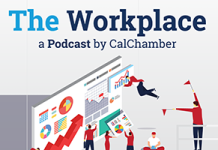 December is here, and not only is the holiday season in full swing, it is the peak of the flu season as well. It’s a time when employees ask for vacation time to visit far-away family, time off to run holiday errands, or call in sick to care for themselves or a sick child. With such a wide range of time off requests, there are a few best practices companies can put into place to help balance business needs with the needs of employees.
December is here, and not only is the holiday season in full swing, it is the peak of the flu season as well. It’s a time when employees ask for vacation time to visit far-away family, time off to run holiday errands, or call in sick to care for themselves or a sick child. With such a wide range of time off requests, there are a few best practices companies can put into place to help balance business needs with the needs of employees.
Handbook Policy
The No. 1 best practice is to create an employee handbook. The handbook should explain what the company policy is on such things as time off requests, attendance, sick leave, and disciplinary actions. If a company provides paid time off or sick time on top of the three days mandated by the Healthy Workplace, Healthy Families Act, the handbook should also include that information.
In addition to providing written information, an employee handbook communicates to employees that there is a fair and consistent way in which the company will address workplace issues. Moreover, the handbook can guide supervisors when faced with employee questions and requests. For example, if multiple employees ask to have the same day off, will the requests be approved on a first come, first serve basis? Is there a particular day, week, or month that time off requests cannot be approved due to high business needs? How far in advance do employees need to submit their time off requests? Is there a point-based absenteeism policy?
Above all, be sure to enforce company policies consistently and fairly.
Medical Leaves
An area in which employers should tread carefully is sick time notices. In California, the Healthy Workplace, Healthy Families Act (HWHFA) mandates that all employees receive 24 hours (or 3 days) of paid sick leave a year, whichever is greater. As is the case with certain medically related protected leaves, employers cannot deny or punish employees who call in sick under the HWHFA.
If an employee has exhausted sick time under the HWHFA, and is consistently calling in sick, employers should be careful when addressing the issue. Although it is possible that the employee is simply calling in sick due to a common cold, it also is possible that the employee has a serious medical condition which would trigger protection under the Family and Medical Leave Act, or other protected leaves. If an employer suspects the sick leave policy (not HWHFA) is being abused, the employer should refer to the attendance or absenteeism policy established in the company’s employee policy handbook.
Vacation Time v. Unpaid Time Off
A recent Labor Law Corner article addressed whether employers may require employees to use accrued paid vacation time before taking unpaid time off.
In the article, California Chamber of Commerce Labor Law Adviser Ellen Savage explains that indeed, employers may require that paid vacation time be used first. Vacation pay is not required by law, although when it is offered, certain accrual and vesting rules do apply in California. However, no law specifies that employees have an absolute right to determine when they want to use their paid vacation, Savage states.
Again, it is a best practice to include language in an employee handbook stating that accrued paid vacation time must be used if available when taking time off for vacation purposes.
Even without this specific language in a handbook, however, an employer still may require the use of accrued paid vacation time since nothing in the law would prohibit such a requirement, Savage explains.
Of course, there are exceptions for certain leaves.
“Note that certain state and federal leave of absence laws limit when an employer may require the use of paid vacation,” Savage writes. “For example, an employee taking a leave of absence for pregnancy disability may not be required to use her vacation pay during the leave, although she may choose to do so at her option.”
Interested in other HR-related articles? Visit the Alert Labor Law Corner and HRWatchdog blog.

